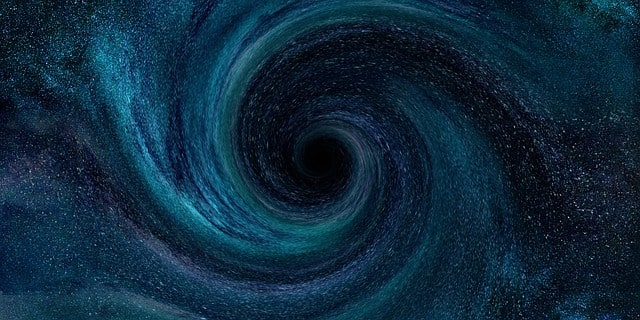Universe in Black Hole — this idea, once relegated to fringe cosmology, is now gaining serious traction thanks to new data from NASA’s James Webb Space Telescope (JWST). Astrophysicists analyzing galactic spin directions, cosmic redshifts, and the Doppler effect have unearthed clues suggesting that our entire observable universe may exist within a black hole. And JWST might have just delivered the most compelling observational evidence yet.
Table of Contents
🚨 The Shocking Discovery: JWST Detects Unexpected Galactic Spin Pattern
In a recent series of high-resolution deep-field observations, JWST scientists noticed something strange—galaxies in one hemisphere of the sky tend to spin in a particular direction, while those in the opposite hemisphere spin the other way. This hemispheric “cosmic handedness” violates expectations of a random, directionless universe.
This strange symmetry could be explained if the entire universe is in a black hole, with a central axis of rotation influencing the spin of galaxies. The idea ties into the broader theory of a rotating, anisotropic universe—something standard cosmology does not currently account for.
🌌 Universe in Black Hole: Redshift Anomalies and the Illusion of Expansion
One of the key pillars of Big Bang cosmology is redshift—the idea that galaxies are moving away from us as space expands. But JWST’s ultra-precise spectrometry has uncovered unexpected redshift values that don’t quite align with the conventional expansion model.
These anomalies might be better explained by the black hole cosmology theory, which suggests that light curves and redshifts are distorted because we are inside a massive rotating black hole. In this model, the illusion of universal expansion could be a misreading of gravitational time dilation and curvature.
🔍 The Doppler Effect—A Clue Hidden in Plain Sight
The Doppler effect has long been used to measure how galaxies move relative to Earth. But researchers now believe these readings might also support the black hole universe theory. If the cosmos has a central point of rotation—like the eye of a storm—it could explain why light from different regions of the universe arrives with varying intensity and distortion.
These data points create a pattern that looks less like a smooth expanding balloon and more like a spiraling funnel—the kind seen in simulations of rotating black holes.
🧠 Expert Opinions: Fringe or Frontier?

Dr. Lior Shamir, a computer science professor from Kansas, has long advocated for unconventional interpretations of galactic spin. He believes the “universe in a black hole” model fits the observed asymmetry far better than randomness or statistical noise.
Other astrophysicists remain cautious, saying the findings warrant further study but are “highly provocative.” Theoretical physicist Dr. Nikodem Popławski, who previously proposed that black holes could birth new universes, says JWST’s data may be “the first observational hints of a new cosmological model.”
📌 Strategic Implications: Rewriting Cosmic Origin Theories
If proven, this would radically alter our understanding of the universe’s origin, structure, and fate. It could mean that:
- The Big Bang wasn’t an explosion, but a passage through a black hole’s event horizon.
- Our observable universe is just one of countless black hole universes in a larger multiverse.
- Time and space are behaving differently than previously understood.
This wouldn’t just be a revision—it would be a paradigm shift in cosmology.
📣 Conclusion: Universe in Black Hole – A New Chapter in Cosmic Discovery
The concept of the universe in a black hole is no longer science fiction—it’s a theory gaining ground with each new discovery from JWST. As researchers dig deeper into the data, the idea may soon evolve from provocative to plausible. Whether it’s the beginning of a new physics revolution or just another detour in our quest to understand the cosmos, one thing is certain: JWST is forcing us to rethink everything.
❓ FAQ: Universe in Black Hole – What You Need to Know
What does it mean for the universe to be inside a black hole?
It suggests that our universe could be contained within the event horizon of a larger black hole in another universe. This theory explains many observed anomalies in cosmic data.
Universe in Black Hole: Is this theory widely accepted?
Not yet. While gaining interest due to JWST data, it remains a speculative but mathematically supported hypothesis in theoretical physics.
How does JWST support this theory?
Through observations of galactic spin asymmetry, redshift irregularities, and unexpected Doppler shift patterns—each of which align with predictions from the rotating black hole universe model.
Who are the key proponents of this theory?
Dr. Lior Shamir, Dr. Nikodem Popławski, and others working on alternative cosmology models have highlighted the potential for black holes to serve as cosmic wombs.
Could this explain dark matter or dark energy?
Possibly. Some versions of the theory suggest that gravitational effects currently attributed to dark matter and energy might be side effects of our universe’s position within a larger black hole.
👉 For more cosmic revelations and deep space investigations like “Universe in Black Hole”, visit: www.documentarytimes.com